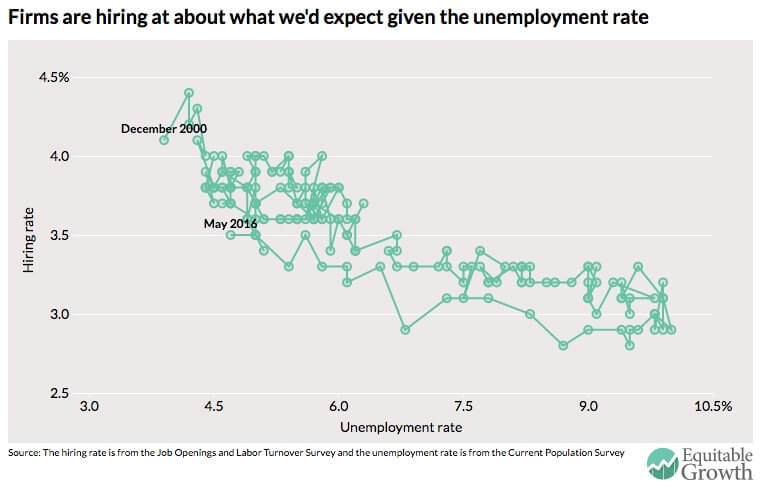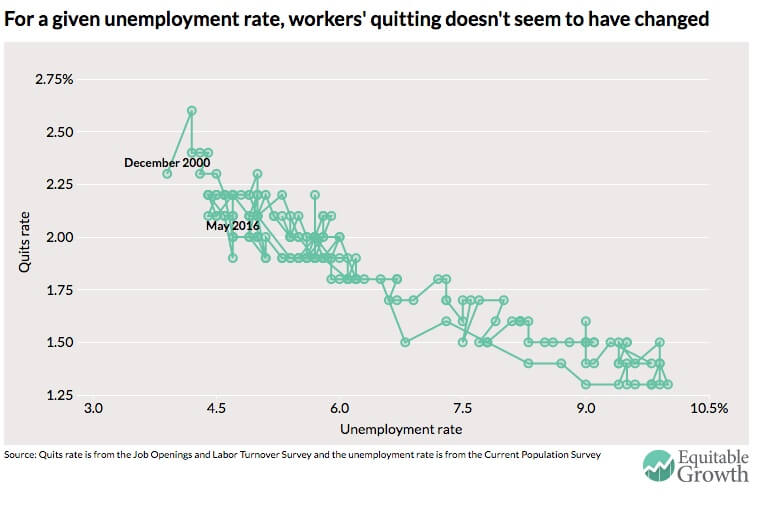A graphical update on the latest data on the U.S. jobs market
The monthly Employment Situation report from the U.S. Bureau of Statistics contains a lot of information about the U.S. labor market, but this data is not the only useful source of information about the jobs market in the United States. Yesterday morning, the agency released the Job Openings and Labor Turnover Survey, or JOLTS, data for May 2016. This lesser-known data set looks at the flows of the labor market—hiring, firing, and job switching. Below are a few graphs highlighting interesting and important trends evident in the data.
First of all, the relationship between job openings and the unemployment rate—known as the Beveridge curve seems to have shifted after the Great Recession ended in mid-2009. Outward shifts in the curve are often interpreted as increases in structural unemployment as employers can’t find adequate workers in the labor market. If that were true, then we’d expect wage growth to accelerate significantly as job openings increased. But wage growth hasn’t been particularly strong and most of the increase in real wage growth has been due to low inflation

Looking more closely at the JOLTS data, the entirety of shift in the Beveridge curve appears to be due to the extraordinarily high unemployment rate for those out of a job for more than 27 weeks.

But has this relationship changed for other labor market flow data? Let’s look at the relationship between hiring and the unemployment rate. As the graph below shows, it really hasn’t changed since the end of the recession. For a given strength of the labor market (measured by the unemployment rate), employers don’t seem to have changed their hiring rates.

The relationship between quits and the unemployment rate hasn’t changed much either. For a given unemployment rate, workers are leaving jobs at about the rate we think they would have given previous data.

So, for a given unemployment rate, employers are hiring workers to join the firm at their usual rate and workers are leaving firms at an expected rate then clearly something has changed with how firms post job openings. The focus, then, should be less on the employees side when it comes to labor market problems and more on the employer side.
